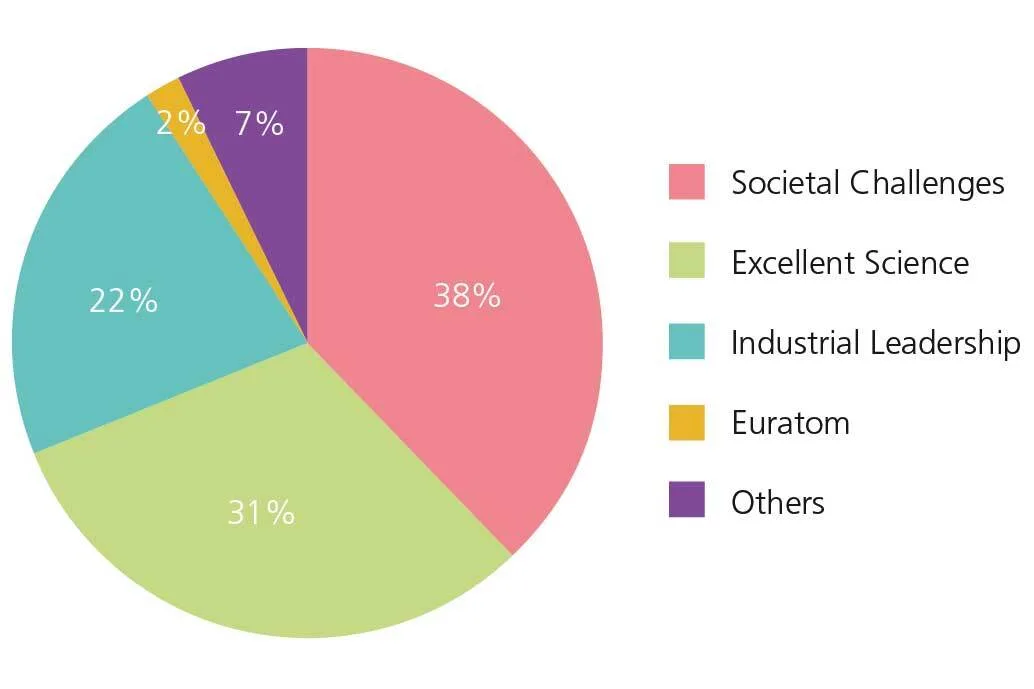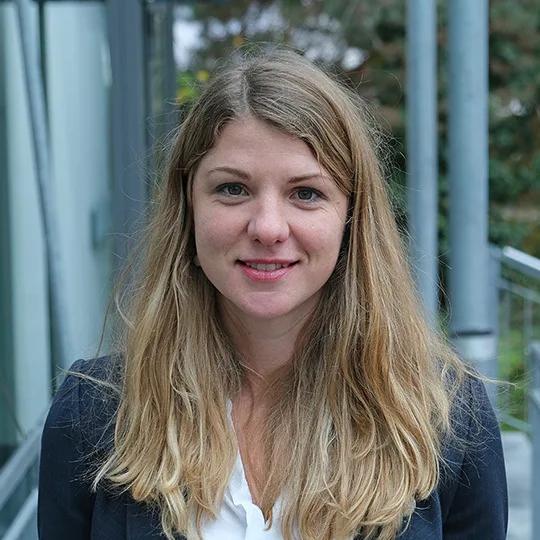Horizon 2020 as an example of international cooperation
Horizon 2020, the European Union's 8th Framework Programme for Research and Innovation, ended in 2021. Switzerland's successful participation strengthened both the Swiss and European research and innovation landscape.

The EU's Horizon 2020 framework programme lasted from 2014 to 2021. Through its various funding instruments, this programme covered virtually the entire value chain from fundamental research to applied research and technological development:
- Excellent Science: this pillar supported fundamental research mainly through the well-established European Research Council (ERC) and Marie Sklodowska-Curie actions (MSCA).
- Industrial Leadership: Targeted investments in research and development of key industrial sectors such as information and communication technologies, nanotechnology, innovative materials, biotechnology, advanced manufacturing and processing, and space have made industry stronger. This pillar provided innovative companies (mostly SMEs) easier access to risk finance.
- Societal Challenges: In addition, this Horizon 2020 pillar focused on seven thematic priorities aimed at solving problems facing society.
With the exception of individual grants awarded through the ERC and the MSCA, a substantial portion of the total Horizon 2020 budget was used to fund collaborative projects. Thus, most participants in Horizon 2020 (over 85%, from all countries) also took part in collaborative projects. Actions relating to Societal Challenges (3rd pillar) were also announced in this form, so that research teams from different, mainly European countries, could submit joint applications. However, there were also various funding opportunities for technological development projects relating to Industrial Leadership (2nd pillar) where joint applications were submitted by consortia comprised of research teams from different countries.

According to the eligibility requirements for collaborative projects, research consortia must include partners from different countries. As a result of this requirement, in most cases consortia were formed between public research institutions and private companies. Such public-private partnerships made it possible for different countries and institutions to coordinate their respective research agendas and facilitated the transfer of knowledge and experiences between the public and private sector.
Researchers in Switzerland are not only sought-after project partners, they are also very successful at coordinating projects. By leading a project, one often gains more influence over the project as well as access to all of the project data obtained. Applications for coordinated projects managed by Swiss researchers had the highest success rate, at just under 17%.
Example of a joint project
Joint projects enable partners with different but essential research and innovation expertise to work together on issues that would otherwise not be possible without such collaboration. For example, a consortium secured Eurostars funding for a project on 'Real time Intraoperative Head-optimised Magnetic Resonance Imaging (hiMRI) for Brain Surgery'. This project aims to produce real-time, high-resolution, ultra-fast, intraoperative MRI of the head to enable accurate and safe navigation during brain surgery. This hiMRI, which can fit into an operating room (OR), has potential to radically transform the surgical workflow by providing surgeons with on-demand access to high quality brain images during surgery. Five project partners from the Netherlands, the UK and Switzerland provided different expertise and technologies to make this project a reality.
Benefits for Switzerland
Cooperation within the context of Horizon 2020 creates added value and benefits not only for Europe, but also for Switzerland. According to a report published by SERI in 2019, Swiss participation in the programme has played a major role in increasing knowledge output, strengthening the economy and bringing about positive social developments in Switzerland:
Increasing knowledge output: publication activities were strong, yielding around five publications per project. In particular, international cooperation in the joint projects meant that many publications were co-authored by Swiss and foreign authors. In addition, joint projects also helped to establish, sustain and strengthen Swiss participation in international networks. Horizon 2020 also had a major impact on the training of young researchers in the Swiss research and innovation sector: on average, each instance of Swiss participation in a Horizon 2020 project led to one Master's degree and one PhD at the Swiss institution involved. Moreover, university participants felt that their participation in a Horizon 2020 project had had a very positive impact on their career.
Strengthening the economy: On average, Horizon 2020 projects resulted in increased turnover for industrial companies and SMEs in about 30 percent of all instances of Swiss participation. For business start-ups, this was the case in about one in every ten instances of project participation. In addition, Swiss participation in Horizon 2020 projects generated an average of one new job per instance of project participation and helped to boost patent activities. On average, nearly half of all instances of project participation by Swiss companies produced a patent and the market development of innovative products.
Positive social developments: Many projects contributed to the implementation or development of policy strategies in Switzerland or helped to improve the general education of the population.
Benefits for Europe
Participation in the EU Framework Programmes not only brings benefits and success to the national research and innovation landscape, but also actively helps to build a competitive European Research Area.
In the context of Horizon 2020, for example, Swiss partners played an active role in the 'European Green Deal' by contributing to various projects to fight climate change and pollution. One example is the Swiss spin-off Daphne Technology, which works closely with its European partners in France, Denmark, Sweden and Norway. It is the only European company to offer a state-of-the-art solution capable of removing nitrogen and sulphur oxides from the exhaust gases of ship engines and boilers. This reduces the environmental impact of shipping.
Switzerland also played a significant role in the establishment and further development of European and international research infrastructures during Horizon 2020. For example, Switzerland provided key technologies for the ITER experimental reactor: the Swiss Plasma Center operates one of only three medium-sized tokamaks (device used to generate controlled nuclear fusion) selected by EUROfusion. In addition, the SULTAN test facility at the Paul Scherrer Institute is the only facility where the ITER superconducting cables could be tested under real conditions.
Switzerland also provided vital expertise for European supercomputers. It was involved in the procurement of the Large Unified Modern Infrastructure (LUMI) supercomputer in Finland, one of the world's most powerful high-performance computers. Switzerland also played a part in the procurement of similar infrastructures in Europe, thus helping to enhance European competitiveness in the field of supercomputing.
International cooperation
Excellent research and innovation knows no borders and thrives in an environment of global competition and collaborative networking. International cooperation benefits everyone and shows that many scientific issues, innovative endeavours and social challenges can be addressed more effectively, if at all, through joint efforts.
The following sources were also used as a basis for this article
- Report entitled, ‘The Impact of Swiss participation in EU Research Framework Programmes, 2019’, SERI
- Ecorda data; compiled by SERI on 20 April 2021
- European Commission data; compiled by SERI
Contact
Authors

Anna Fill

Brita Bamert



